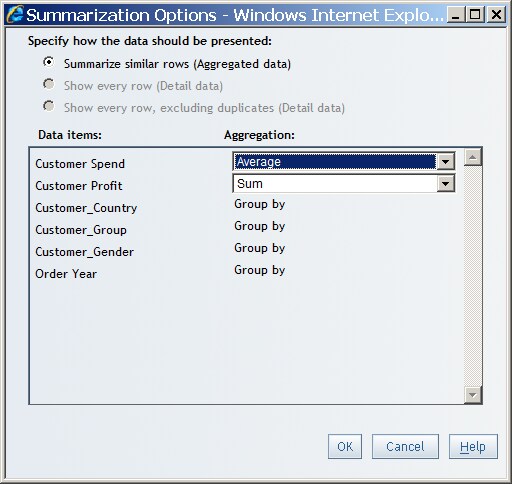Modify How a Measure Is Aggregated
You might
want a measure in a relational data source to use a different aggregation
method than the default method. For example, your data source includes
a measure named
Unit Cost that uses
the sum aggregation method. You want to use the maximum aggregation
method instead.
-
(Optional) Change the name of the measure to better reflect the new aggregation method. For example, you could change Customer Spend to Average of Customer Spending. For more information, see Rename a Standard Data Item.
Tip
Sometimes changing
how a measure is aggregated can give you a different view of the underlying
data. For example, the measure Supplier IDs contains one unique ID for each supplier. The default aggregation
method for Supplier IDs is sum. If
you change the aggregation method to count, the query returns a numerical
value that represents the number of suppliers. In this case, you would
change the name of the measure to something more appropriate, such
as Number of Suppliers. For more information,
see Rename a Standard Data Item.
